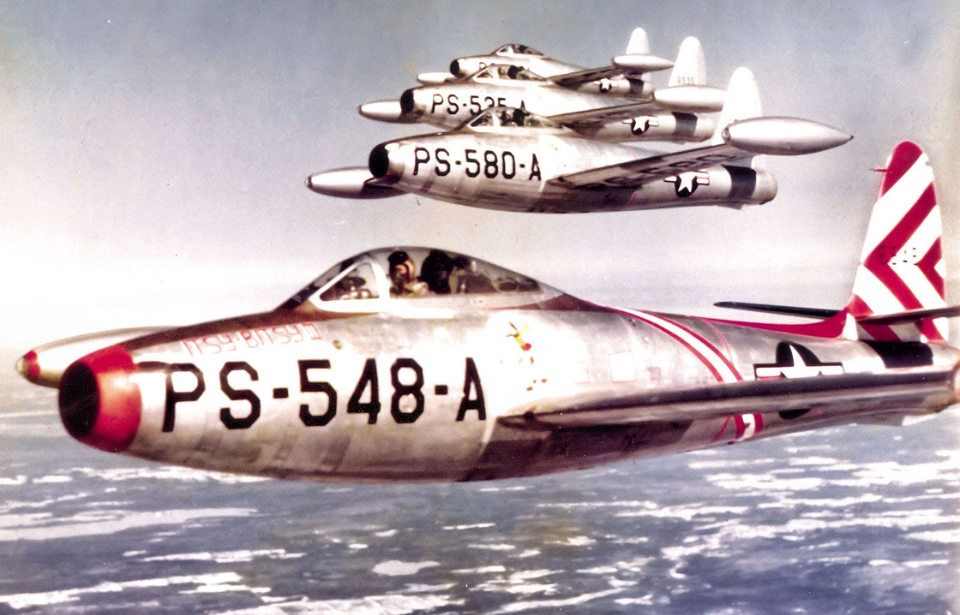The Republic F-84 Thunderjet was an American jet-powered fighter-bomber. Primarily flown by the US Air Force from 1947-64, it suffered many issues during its development and early service. That being said, it performed admirably during the Korean War, and was the first aircraft used by the Thunderbirds.
Development of the F-84 Thunderjet
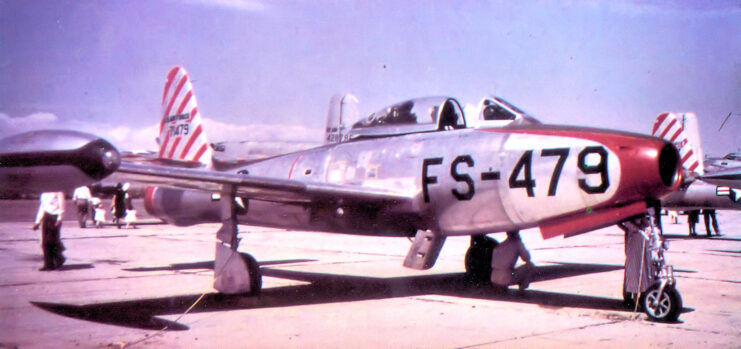
On September 11, 1944, the US Army Air Forces set requirements for a “day fighter.” It would need a top speed of 600 MPH, a combat radius of 850 miles, and be armed with either eight 12.7 mm or six 15.2 mm cannons. These specifications were later adjusted to feature a smaller combat radius of 705 miles and fewer armaments.
Looking to replace the P-47 Thunderbolt, the USAAF placed an order with Republic for three prototypes of the XP-84. Trusting the company’s reputation, the service didn’t inquire with other manufacturers. The first prototype was completed in December 1945, with testing not occurring until February 1946, following delays with acquiring engines. Wind tunnel tests also showed design flaws with the vertical stabilizer at high speeds, and there were concerns over the weight of the aircraft.
Republic F-84 Thunderjet Specs
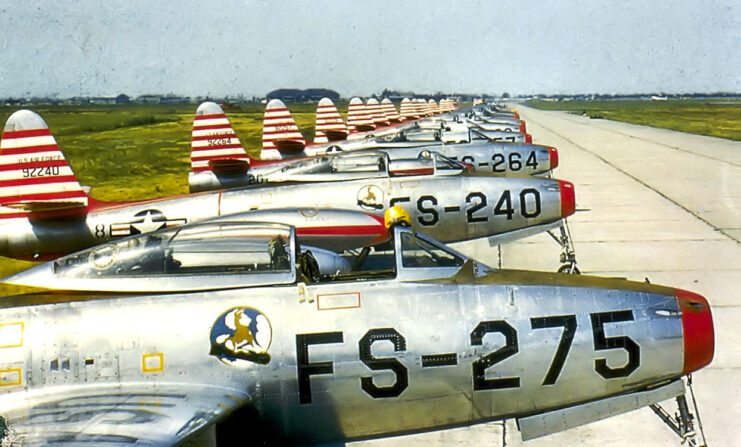
The F-84 Thunderjet’s general characteristics included a central air intake at the nose of the aircraft, straight wings with wingtip tanks, a sliding canopy that would later be modified with support struts and a tandem landing gear configuration. At its nose were six .50-caliber M3 Browning machine guns, and, later on, pylons were added under each wing and beneath the center of the aircraft to hold up to 32 rockets, 4,000 pounds of bombs or one Mark 7 nuclear bomb.
The F-84 was powered by an Allison J35-A-29 turbojet engine. The J-35 was the Air Force’s first axial-flow compressor jet engine, and it featured a simple design consisting of an 11-stage axial-flow and single-stage turbine. When paired with the afterburner, it produced 5,600 pounds of thrust.
New variants aim to fix persistent issues
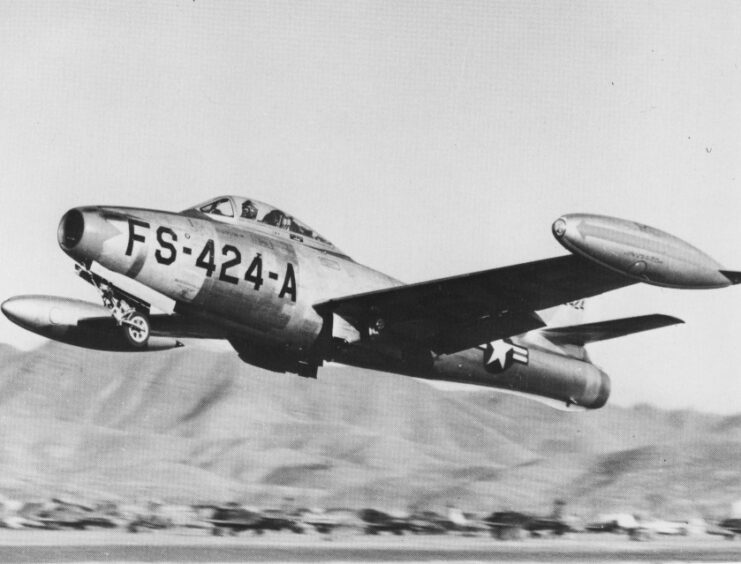
In December 1947, the first F-84B Thunderjets were delivered to the 14th Fighter Group at Dow Field, Maine. Maximum speed and acceleration restrictions were soon placed upon pilots, due to issues involving the wrinkling of the aircraft’s skin – a top speed of Mach 0.8 and no more than 5.5 g of acceleration.
Maintenance issues soon earned the F-84B the nickname, “Mechanic’s Nightmare.” These problems grounded the entirety of the F-84B fleet, and modifications were made to the incoming F-84C. These, however, didn’t prevent the new variant from suffering similar issues, with these aircraft also being grounded.
Service during the Korean War
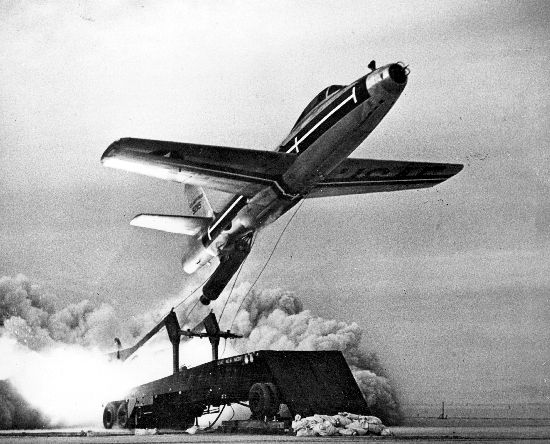
Upon the United States entering the Korean War, it was decided that an F-84 Thunderjet wing would be sent overseas. Arriving toward the end of 1950, they began sorties that December and scored their first air-to-air kill on January 21, 1951. However, this victory came at a cost: the loss of two of the fighter-bombers.
It was clear that the air-to-air combat role should be given to the North American F-86 Sabre, as the F-84 was better suited in a ground attack role. By the conclusion of the war, the aircraft had flown 86,408 sorties, dropped 55,586 tons of bombs and 6,129 tons of napalm, and fired 22,154 rockets. The F-84 was responsible for the destruction of 60 percent of all air-to-ground targets, as well as eight air-to-air kills against Mikoyan-Gurevich MiG-15s.
According to the Air Force, 305 F-84s were lost during the conflict, 249 of which were combat-related.
US Air Force Thunderbirds
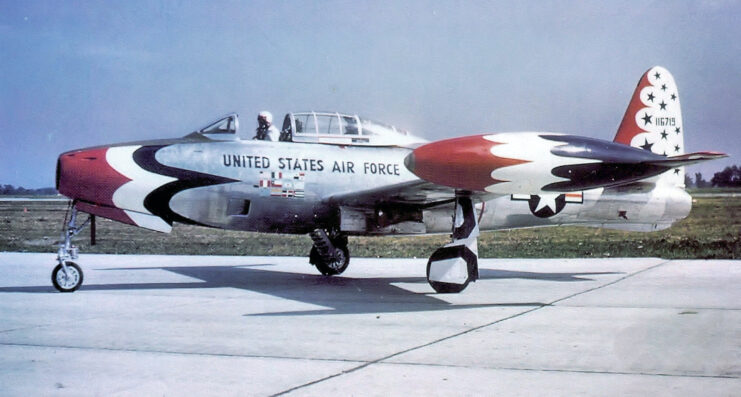
The F-84E was also used by the Skyblazers, the lesser-known demonstration team with the US Air Forces in Europe.
Accomplishments of the Republic F-84 Thunderjet
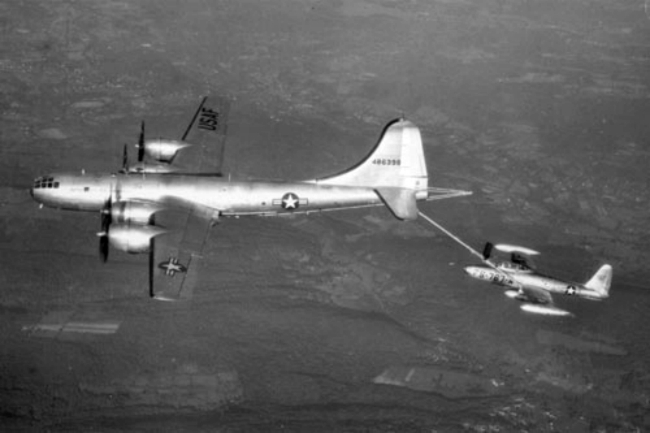
In addition to performing efficiently in combat during the Korean War, the F-84 Thunderjet became the first jet aircraft to successfully perform air-to-air refueling with a converted Boeing B-29 Superfortress.
In 1955, a F-84E became the first aircraft to perform a zero-length takeoff. This involved a solid-fuel booster rocket attached to the underside of the fighter-bomber, which enabled it to takeoff from anywhere, including a trailer.
